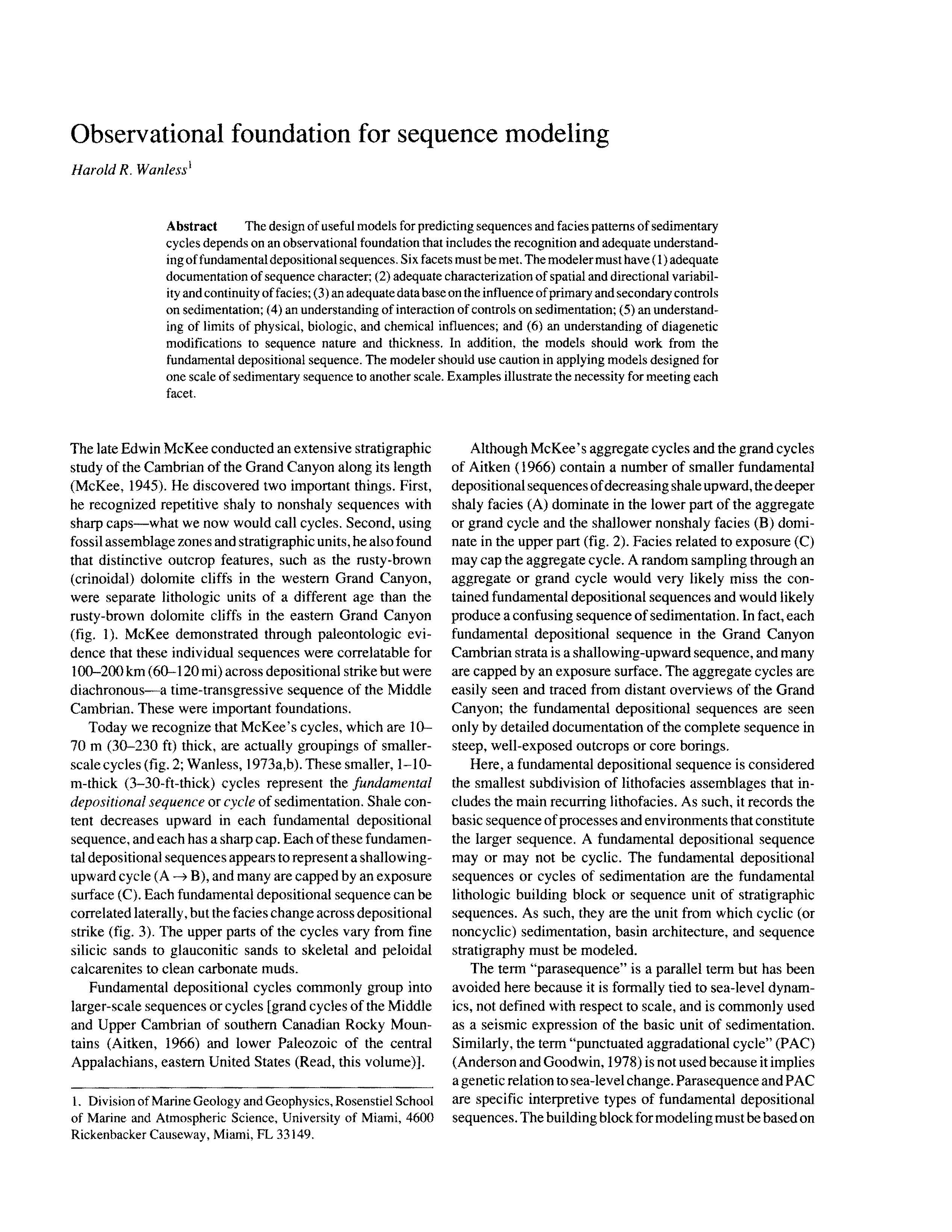Observational foundation for sequence modeling
DOI:
https://doi.org/10.17161/kgsbulletin.no.233.20448Abstract
The design of useful models for predicting sequences and facies patterns of sedimentary cycles depends on an observational foundation that includes the recognition and adequate understanding of fundamental depositional sequences. Six facets must be met. The modeler must have (1) adequate documentation of sequence character; (2) adequate characterization of spatial and directional variability and continuity of facies; (3) an adequate database on the influence of primary and secondary controls on sedimentation; (4) an understanding of interaction of controls on sedimentation; (5) an understanding of limits of physical, biologic, and chemical influences; and (6) an understanding of diagenetic modifications to sequence nature and thickness. In addition, the models should work from the fundamental depositional sequence. The modeler should use caution in applying models designed for one scale of sedimentary sequence to another scale. Examples illustrate the necessity for meeting each facet.

